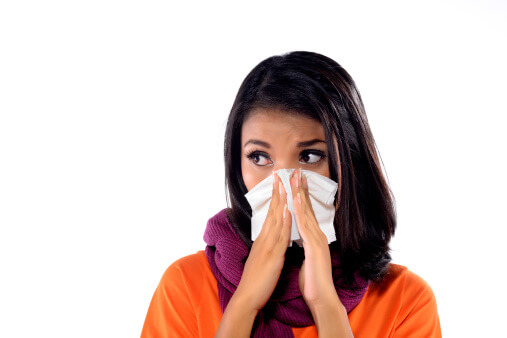
Central Air Conditioning and Allergies
The year-round comfort of central air conditioning comes with a steep price for some people — an increase in allergy symptoms. This occurs because AC systems must operate in a closed environment in order to be effective and low-cost. The restriction of airflow from outside means any contaminants in the air are continually recirculated through the building, and if these include allergens, there’s very little relief for allergy sufferers. The better insulated the environment, the worse the effects can be.
Contaminants found in indoor air include:
- Synthetic fibers from carpets and furniture fabrics
- Chemicals contained in building materials including formaldehyde
- Cleaning and personal care products
- Insecticides and pesticides
- Gases produced by water heaters and cooking appliances including carbon monoxide (CO), which is potentially lethal
- Fumes produced by combustible agents including tobacco products and wood burning fireplaces
- Pet dander and dust mites
- Contaminants introduced from outdoor air, including pollen and radon gas.
Central air conditioners can actually promote the formation of offensive biological contaminants within your home or business, too. Cool air produced by central air conditioners is transported throughout a structure by air ducts located in attics and walls. As cooled air travels through the air ducts in these warmer areas, condensation can occur. This creates an ideal environment for the production of mold, a primary irritant for allergy sufferers.
Allergy Symptoms
For allergy sufferers, central AC systems can cause or exacerbate a variety of symptoms including irritation of the eyes, nose, and throat, respiratory congestion and shortness of breath, dizziness, headaches, and fatigue.
Reducing the Effects of Central Air Conditioning on Allergies
There are a number of measures available to combat the effects of central air conditioning systems on allergy sufferers. One of the most effective is having the air ducts in your home professionally cleaned. Homeowners should have their air ducts inspected for leaks and cleaned by a qualified HVAC professional regularly to remove contaminants and reduce the risk of re-contamination.
Central air conditioning utilizes air filters which are designed to remove contaminants from indoor air. Air filters vary in effectiveness and price. At the low end of the effectiveness spectrum are fiberglass and polyester media filters which are low cost but do not provide sufficient filtration for allergy sufferers. More effective electrostatic AC filters create an electrical charge that attracts airborne contaminants to the filtration material where they are trapped for future removal. Electrostatic central air conditioning filters should be cleaned regularly with ordinary tap water and thoroughly dried before being replaced in the system.
For allergy sufferers, High-Efficiency Particulate Air (HEPA) filters are often recommended. HEPA filters are single-use, disposable filters constructed of a dry-type filter medium with a minimum particulate removal efficiency of 99.97% of 0.3 micron or lager contaminants.
Good filters and regular professional cleaning can help a lot, but for severe allergies, additional precautions may need to be taken. Ultraviolet light cleaning and air purifiers are options to consider.